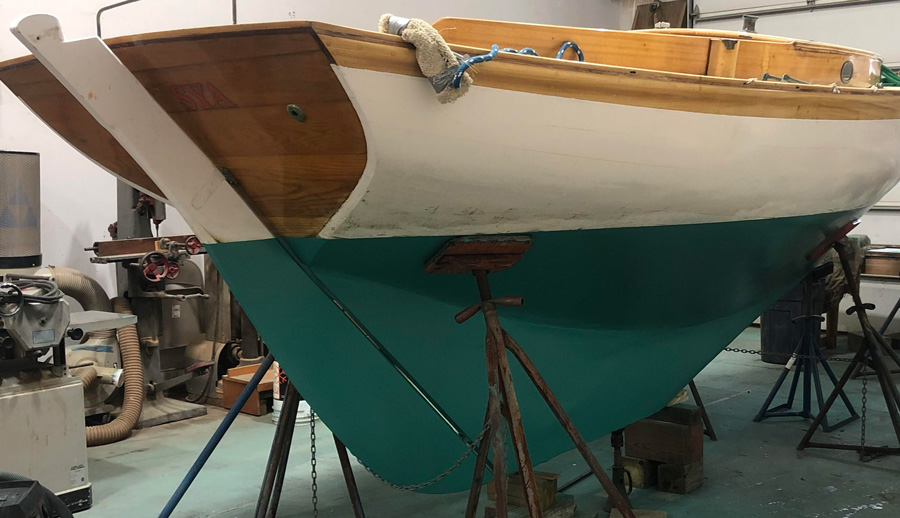You don’t have to share my passion for both books AND boats to know that the word draft means very different things to authors and sailors. In writing, a draft is a preliminary version; a large collection of words that will definitely need editing before sharing with others. On boats, draft is a fixed number; the depth of water needed to avoid running aground.
The word has many other meanings as well. Merriam-Webster lists 13 different possibilities for the noun alone, touching on such completely unrelated activities as drinking beer, hauling fish, and smoking. (See what kind of rabbit holes I disappear down when I’m drafting?) Like another favorite word, latitude, clarifying the meaning of draft requires context.
And since clarity is what I’m seeking right now, let’s start with the boating definition—because that’s a simple number.

Shallow drafts and shortcuts
Shallow-draft vessels generally don’t sail as fast upwind, but they are more nimble. And the ability to navigate across “thin water” creates options; straying out of the channel to take advantage of a shortcut, for instance. Once in harbor, there will be many more anchoring options.
In writing, a shallow first draft would just skim the surface of what happens; get the basic framework down on “paper,” and fill in the details later. Like that shallow-draft sailboat, it’s the best way to stay nimble about the final destination. After all, why include all those pesky “deep” details that will just have to be cleaned up in a later draft?
Months ago, I promised I would dare to fail with this next book; get the story down first, before diving too deep into each character’s quirks. You can probably already hear my deflated sigh; unfortunately, shallow first drafts just don’t seem to be something a story-parent like me can write. Because shortcuts don’t lead to inspiration.
Imagination vs. efficiency
Right now, I’m dancing around the building blocks of my next WIP. (Yes, it’s a sequel of Ferry to Cooperation Island.) With FERRY’s polished final sheen still fresh in my mind, I want to beeline toward the next novel’s finish line; all those carefully chosen words! All those scenes that line up like breadcrumbs, leading the reader from one chapter to the next! Just the right amount of backstory to enrich the characters, without bogging down the plot line!
Instead, I’m back to puzzling through what happens next, hanging on for the ride as both new and well-known characters take unexpected detours. Hey! I want to tell them; didn’t you read my outline??
Deep drafts
For better or worse, my imagination cannot be bullied or cajoled into efficiency. Creating a deep first draft (or, as I wrote back in 2009, carving out a Rough Draft) is the only way I can figure out what this next story is really all about; all those details that will probably be eliminated later on are what reveal the big picture. The simple act of re-reading a scene I wrote a few months ago can spark an “of course, that’s how it happens” moment, which is the very best part of writing fiction. (And, I admit, I’m absolutely incapable of re-reading a roughed-out scene without making line-edits—even though I know it’s a complete waste of time.)
Renaming this process “deep drafting” does nothing to improve its efficiency, but at least it sounds more professional than “pantsing.” So I’m going to take my new boat metaphor and lash it directly to my writing process. Shallow drafts might be good for sneaking across a sand bar or into a quiet harbor, but deep drafts will make progress even against a strong headwind.
So as I gaze off into the future fog of finishing this next book, desperately searching for a shortcut, I remind myself of what really matters: creating another book I will be equally proud to share. For me at least, that means gathering together way more words than you will ever see, and staying in the channel; the only way I know to make real progress. Fortunately, even though it’s not nearly as much fun as “having written,” and even as I wonder if there’s a more direct route to a safe harbor, I still enjoy this part of the process—way more than drinking beer, hauling fish, or smoking.
Thanks for following along on this writing (and sailing) journey. Got a thought about your own creative process? Share it in the comments below, or email me. I read every single (human-created) word, with gratitude.